How Many Calories in a Slice of Pizza?
Learn how nutritious pizza really is before you down your next delicious slice of pie.
This article is more than 2 years old
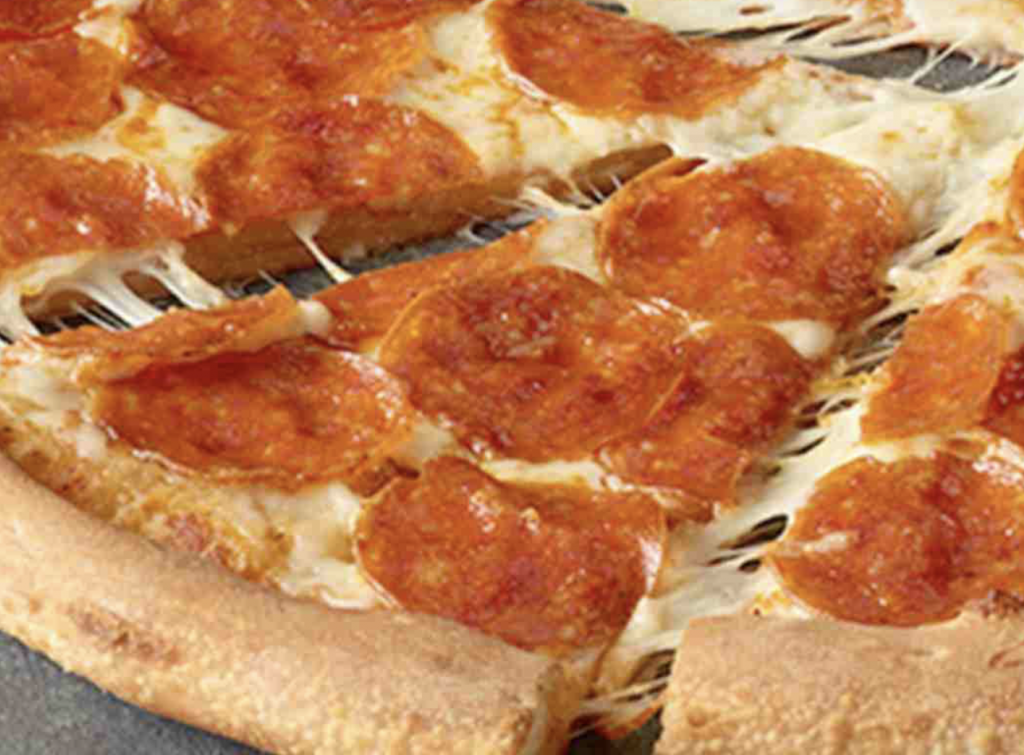
Pizza is one of the world’s great comfort foods. The way the melty cheese perfectly melds with the tomato sauce atop a pillowy portion of dough activates our tastebuds in a way few foods do. The act of indulging in a delicious slice of pizza is like sinking your teeth into utter bliss. And the best part is that that pure bliss comes in a slew of different options designed to satisfy a virtually limitless amount of palettes. From frozen pizza to ones fresh from the oven at your local pizza joint, there is truly a pizza for every person. Essentially, pizza is just perfect in every way, well except for the fact that too much of it might have an adverse effect on your waistline. Did you ever think to yourself ‘how many calories in a slice of pizza are there?’ before biting down into a sumptuous slice?
If you’ve ever had that momentary pause of considering the calorie count in a slice of pie before preceding to devour it, you’re not alone. Oftentimes, and perhaps rather unfortunately, the best things in life happen to be some of the poorest dietary choices or at the very least the most caloric. Pizza, in all of its divine deliciousness, is indeed a calorie culprit. However, just because a slice of pizza may pack a few extra calories doesn’t mean you should deprive yourself of downing a slice or two every so often. I mean, you only live once, right!? Why not live it appreciating life’s little pleasures? Still, to work pizza into a healthy lifestyle you should inform yourself of its general nutritional profile. You should learn just how many calories in a slice of pizza there are.
Hence, in service of your quest to uncover everything there is to know about pizza, we did the prep work for you. Read on to discover how to keep your tastebuds tantalized while still watching your waistline. Learn the typical caloric content of a single slice, what toppings tip the calorie charts and which ones don’t, and how regional varieties compare nutritionally. Then discover where pizza fits into living and leading a healthy life.
CALORIES COUNT
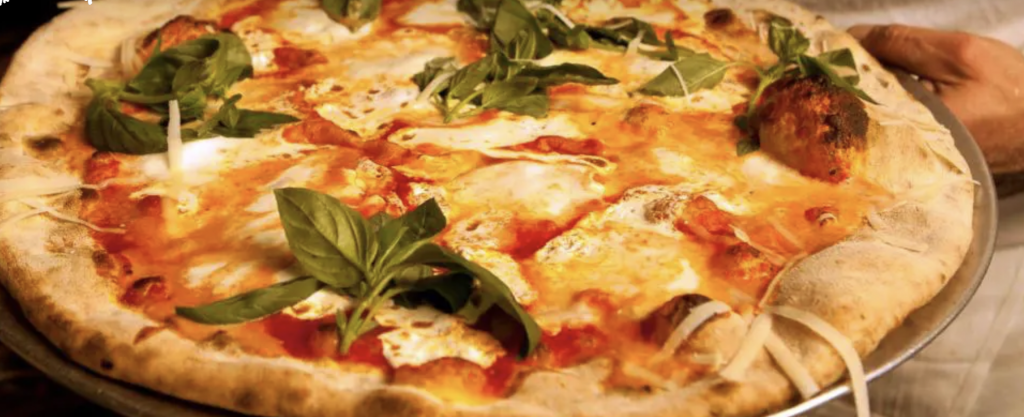
Since there are so many different types of pizza it stands to reason that the caloric content in a single slice would vary depending on who made the slice and what type of pizza it is. Thankfully, the U.S. Department of Agriculture outlined the nutritional profile of what one can expect in a typical slice of cheese pizza (sans toppings) that you would get from an average pizzeria or pizza chain.
According to the USDA, one slice of pizza contains approximately:
- 285 calories
- 10.4 grams of fat
- 640 milligrams of sodium
- 35.7 grams of carbohydrates
- 2.5 grams of fiber
- 3.8 grams of sugar
- 12.2 grams of protein
Now that you know the general answer to how many calories in a slice of pizza there are as well as the general nutritional profile, logically you’re likely asking yourself what does it all mean? The answer to this question will vary by individual. Caloric and nutritional requirements change depending on a variety of factors including age, weight, gender, activity level, and any health conditions a person may have. For instance, those with certain cardiovascular diseases might have to watch their sodium intake, and thus that would alter the amount of sodium they should consume in a day. In order to get a baseline for your specific calorie needs a good place to start is here. That being said, this is how a slice of pizza stacks up next to the nutritional requirements in a typical 2,000 calories/day diet, as defined by the US Food and Drug Administration.
According to the FDA, a person following a 2,000 calories/day diet should consume:
- 78 grams of fat
- 2300 milligrams of sodium
- 275 grams of carbohydrates
- 28 grams of fiber
- 50 grams of sugar
- 50 grams of protein
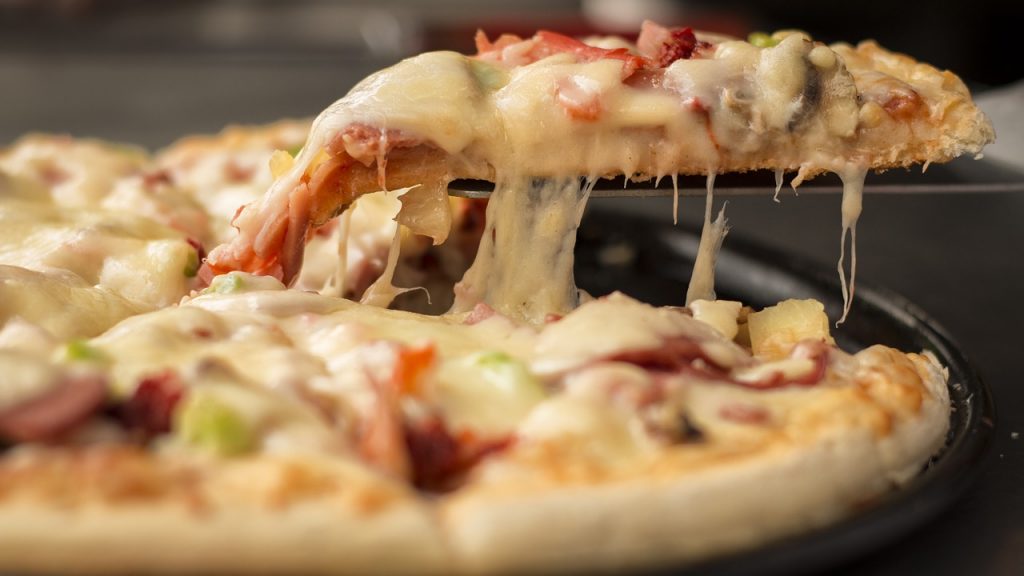
Based on these numbers a single slice of pizza accounts for:
- 14.25% daily calorie intake
- 13.3% daily fat intake
- 27.8% daily sodium intake
- 13% daily carbohydrate intake
- 9% daily fiber intake
- 7.6% daily sugar intake
- 24.4% daily protein intake
So what do all of these figures mean? They mean that pizza can most definitely fit into a healthy diet/lifestyle. That is provided that you remain cognizant of how much you are consuming and how often you are consuming it. Which, all in all, is great news for all the pizza lovers out there (of whom there are many!).
TOPPINGS TIP THE SCALES?
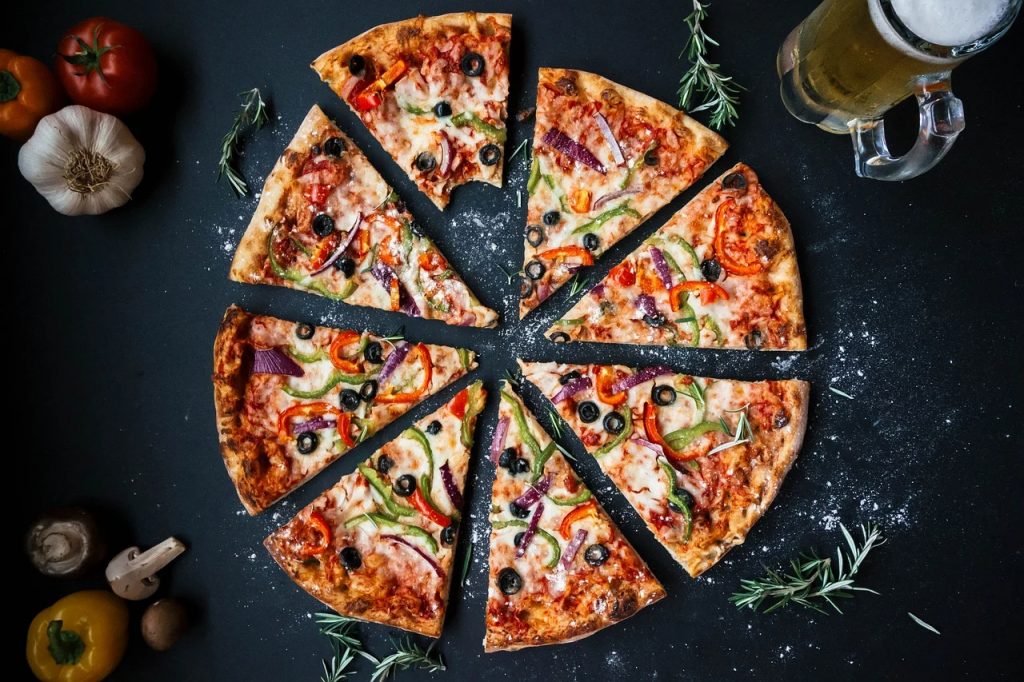
Luckily, how many calories in a slice of pizza there are nor the nutritional makeup of a typical slice doesn’t impede its ability to remain a part of leading a healthy life. However, the calories and nutritional makeup outlined above only account for a plain slice of cheese pizza sans any toppings. And while the inventor of the classic cheese and sauce combo made it simple, sometimes you just want a slice with a little extra pizzaz. Although, more add-ons mean more calories. Piling your pizza with a mound of pepperoni or one of your other favorite toppings changes pizza’s nutritional profile quite a bit. So before downing your next delicious slice full of your favorite fixings you should be aware of how those extras can alter your diet for that day.
To illustrate what you should keep in mind in terms of pizza toppings we looked at three popular options: Pepperoni Pizza, Pizza Supreme (pepperoni, sausage, green peppers, onions, and mushrooms), and Vegetable Pizza.
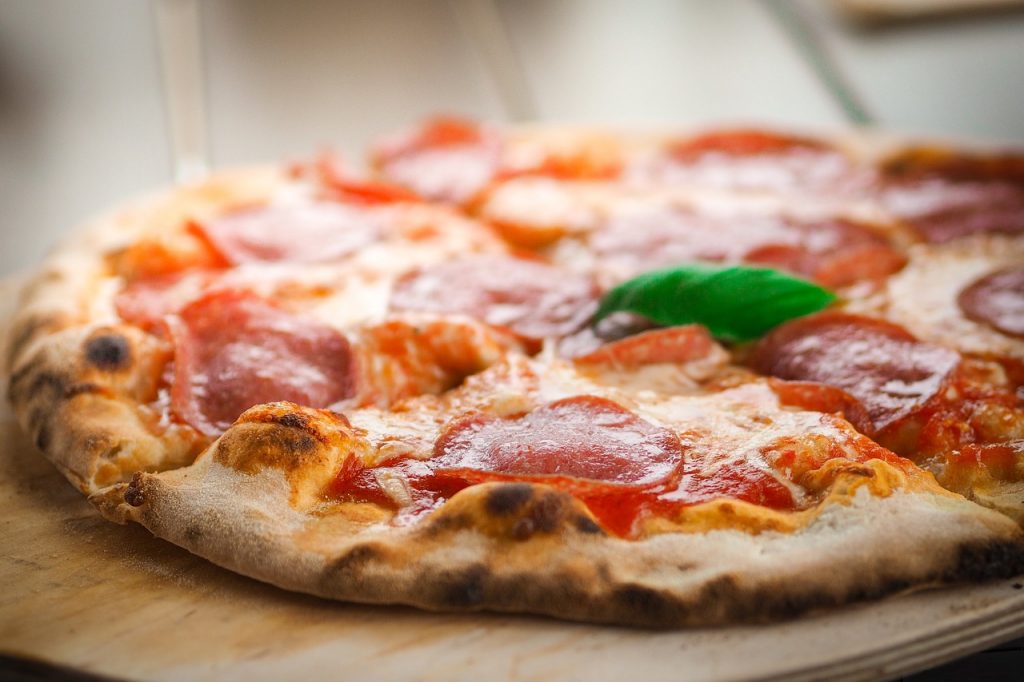
Calories in a single slice of pepperoni pizza ( all percent daily values based on a 2,000 calorie/day diet):
- 313 calories; 15.65% of daily intake
- 13 grams of fat; 20% of daily intake
- 760 milligrams of sodium; 32% of daily intake
- 35.7 grams of carbohydrates; 13% of daily intake
- 2.6 grams of fiber; 9.2% daily intake
- 3.6 grams of sugar; 7.2% daily intake
- 13 grams of protein; 26% daily intake
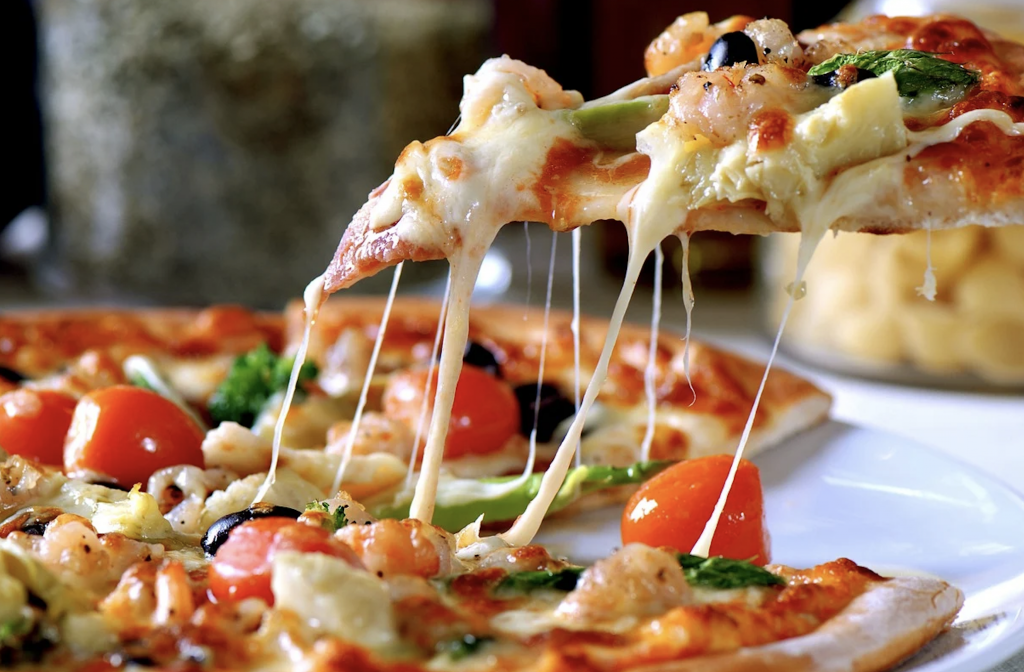
Calories in a single slice of supreme pizza:
- 332 calories; 16.6% of daily intake
- 15 grams of fat; 22.8% of daily intake
- 801 milligrams of sodium; 34.8% of daily intake
- 35.7 grams of carbohydrates; 13% of daily intake
- 3 grams of fiber; 10.7% of daily intake
- 5 grams of sugar; 10% of daily intake
- 15 grams of protein; 30% of daily intake
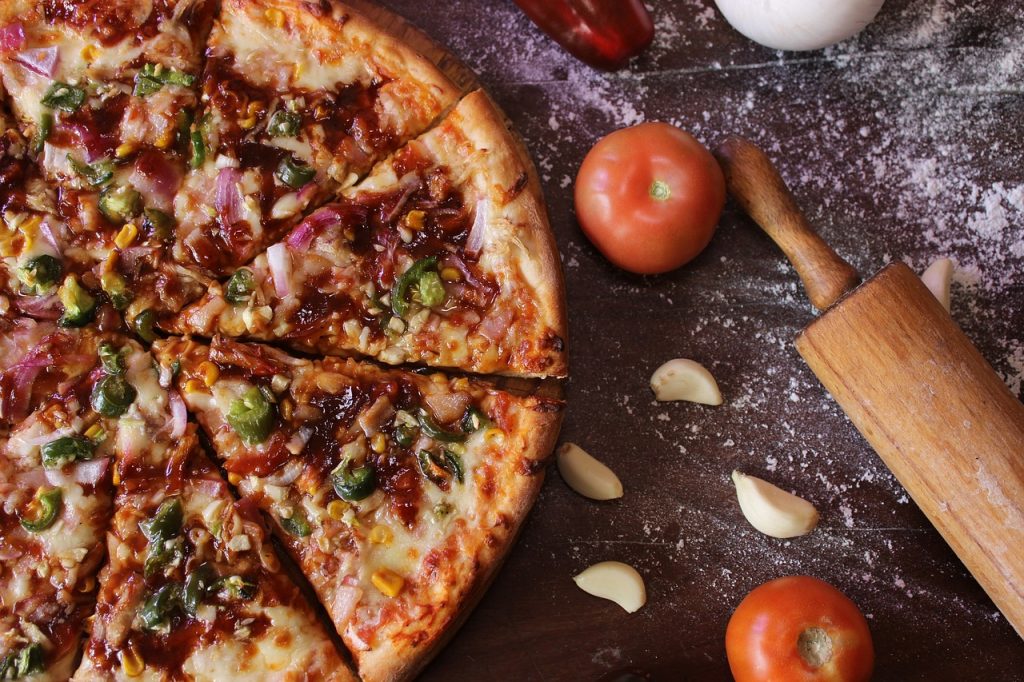
Calories in a single slice of veggie pizza:
- 280 calories; 14% of daily intake
- 9 grams of fat; 11.5% of daily intake
- 700 milligrams of sodium; 30.4% of daily intake
- 39 grams of carbohydrates; 14.1% of daily intake
- 2 grams of fiber; 7.1% of daily intake
- 5 grams of sugar; 10% of daily intake
- 11 grams of protein; 22% of daily intake
The numerical values above reflect how toppings can change how many calories in a slice of pizza there are. For instance, if you are watching the amount of sodium you intake per day closely, you may want to avoid choosing a supreme slice. Or if you are upping your carbs in preparation for an activity like a 5K race then you might want to down a slice or two of veggie pizza the day before. All in all, the takeaway here is that toppings change pizza’s nutritional profile, and being aware of those changes can help you modify your diet for that day so you can enjoy the slices you love most.
WATCHING YOUR WAISTLINE
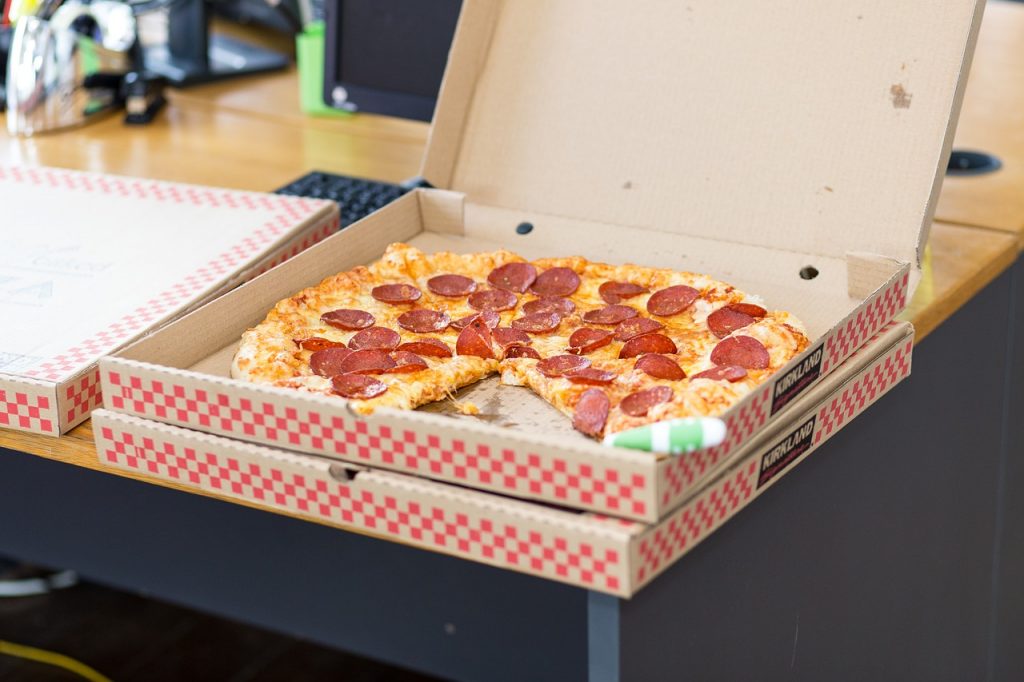
In general, keeping yourself informed about how many calories in a slice of pizza there are and arming yourself with knowledge pertaining to your own dietary needs will help to keep your waistline in check. However, there are a few other tips and tricks you might want to keep in mind before diving into your next slice. First, the guidelines above are general expectations of the kind of nutrition you’re likely to consume in a single slice. However, every pizza place is different. So in order to get the most accurate caloric and nutritional content information, it’s best to refer to the establishment’s website that you are purchasing your pizza from.
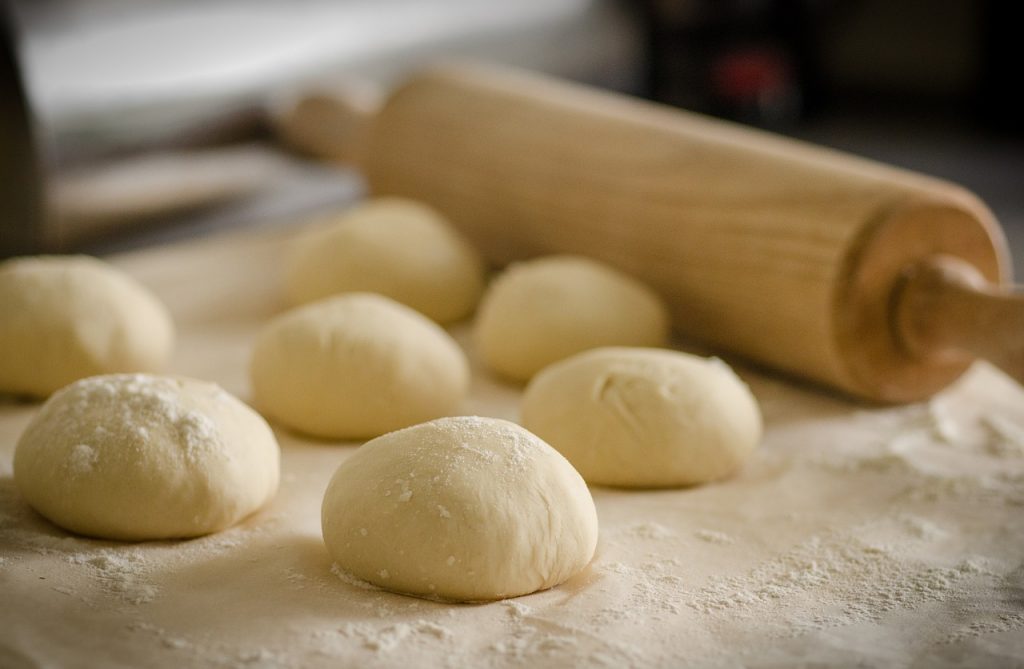
Furthermore, the best way to control how many calories you are eating and to know for certain what ingredients the pizza pie is made of is to simply make the pizza yourself. Believe it or not, it’s not all that difficult to make make your own pizza dough! Making your own pizza can also prove to be a fun activity to try on a rainy day with the kids or serve as a wonderful bonding opportunity for you and your partner.
Lastly, for those times when you just don’t have enough hours in the day to craft your own pie or perhaps don’t want to wait that long to curb your pizza craving you can always ask the pizzeria to modify the toppings in a way that best suits your dietary needs. For example, request less cheese or sauce. Or you can even ask for ingredients to be put on the side so you can control the portion that ultimately ends up on your pie so you can garble up a good old slice absolutely guilt-free.





